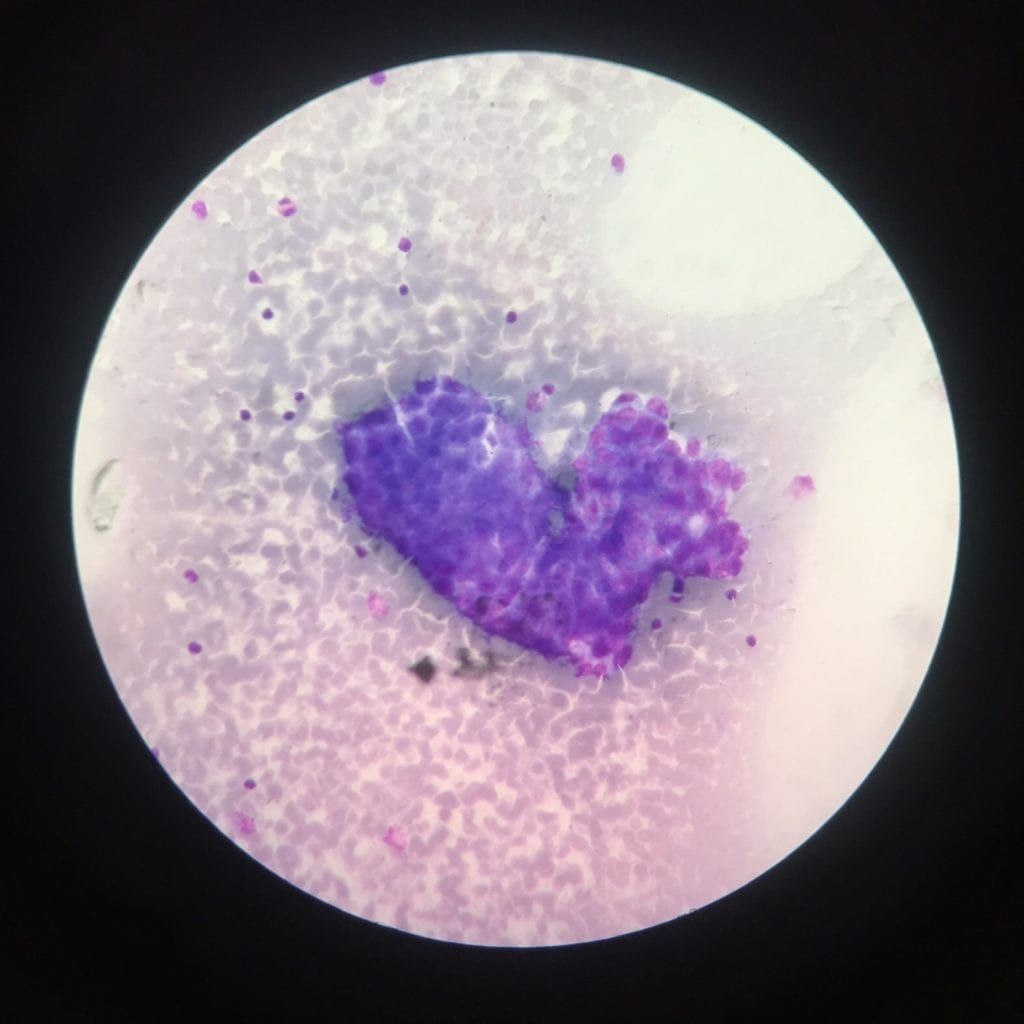At the end of last week’s article, we discussed some of the ways you can screen for ovarian cancer. These included regular pelvic exams, transvaginal sonography, and the CA-125 blood test. If any of these test results indicate the possible presence of ovarian cancer, then the next step is to speak with a gynecologic oncologist. Ultimately, the only way to accurately diagnose ovarian cancer is by taking a biopsy, or a sample of the tumor. This sample will then be examined under a microscope to determine if cancerous cells are present.
After a diagnosis of ovarian cancer has been made, the next step is to determine what stage the tumor is. Ovarian cancer has four stages that range from early disease to advanced disease. Stage I means that the cancer is confined to the ovary or fallopian tube, stage II means the cancer has grown into one or both of the ovaries with pelvic extension, stage III means that the cancer has spread beyond the pelvis, and stage IV means that the cancer has spread throughout the body.

It is also important to determine the tumor grade, which is how healthy the cancer cells are. Cancer that looks like healthy tissue with different cell groupings is known as differentiated or low-grade, while cancer that looks significantly different than healthy tissue is known as poorly differentiated or high-grade. The grade allows your gynecologic oncologist to estimate how quickly the cancer may spread.
Both the stage of the cancer and the grade of the tumor are important factors when determining the best treatment for ovarian cancer. This is because the stage essentially tells your oncologist where the cancer is, while the grade helps them to estimate how fast it is expected to spread. However, surgery is often required to accurately determine the stage of the cancer. There are three surgical techniques that are used:

- Initial surgery is the first surgical technique performed using a laparotomy. During a laparotomy, a vertical incision is made in the abdomen so the surgeon can look inside and remove any cancerous tissue. In most cases, this also includes the removal of the ovaries and fallopian tubes (salpingo-oopharectomy), as well as possibly the uterus (hysterectomy). The goal of this surgery is remove as much cancerous tissue as possible, obtain an accurrate surgical diagnosis, and determine how far the cancer has spread.
- Second-look surgery is a follow-up procedure used after the cancer has responded to chemotherapy. This procedure is less invasive than the initial surgery and is generally performed using a laparoscopy. The main goal of this surgery is to determine whether any cancer remains in the abdominal cavity.
- Additional debulking surgery may be performed for recurrent cancer. The goal of this surgery is to remove cancerous tissue after a disease-free interval, reduce cancer symptoms, increase the efficacy of chemotherapy, and to remove bowel or uretal obstruction.
Chemotherapy and radiation are also used to treat ovarian cancer. Chemotherapy is often used to shrink tumors before surgery or radiation, control tumor growth, or cure the cancer without removing the ovaries. Although radiation can be used to treat ovarian cancer, it is generally not used very often in the United States. Instead most gynecological oncologists recommend a combination of chemotherapy and surgery. Ultimately, when it comes to treating ovarian cancer, you will need to discuss your options with an experienced gynecological oncologist. This is because the best treatment for you can depend on a number of factors.

Dr. Geoffrey Zann is a Certified Robotic Da Vinci Surgeon, Board-certified by the American College of Obstetricians and Gynecologists, and a Diplomat of the American Board Obstetrics of Gynecology. He has been a member of the American Society for Colposcopy and Cervical Pathology, American Association of Gynecologic Laparoscopists, and the Hugh R. K. Barber Obstetric and Gynecologic Society.
